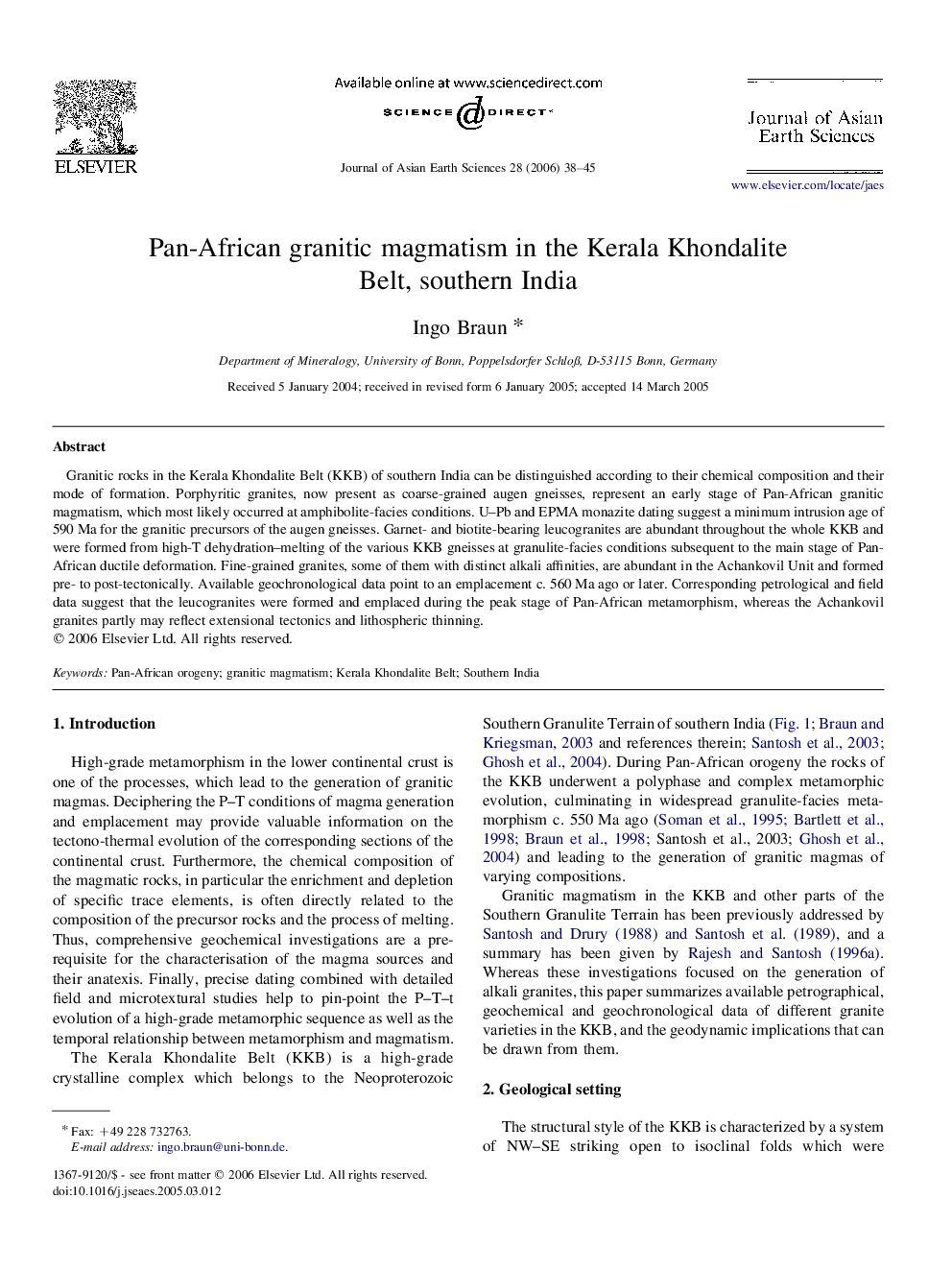| Article ID | Journal | Published Year | Pages | File Type |
|---|---|---|---|---|
| 4732659 | Journal of Asian Earth Sciences | 2006 | 8 Pages |
Granitic rocks in the Kerala Khondalite Belt (KKB) of southern India can be distinguished according to their chemical composition and their mode of formation. Porphyritic granites, now present as coarse-grained augen gneisses, represent an early stage of Pan-African granitic magmatism, which most likely occurred at amphibolite-facies conditions. U–Pb and EPMA monazite dating suggest a minimum intrusion age of 590 Ma for the granitic precursors of the augen gneisses. Garnet- and biotite-bearing leucogranites are abundant throughout the whole KKB and were formed from high-T dehydration–melting of the various KKB gneisses at granulite-facies conditions subsequent to the main stage of Pan-African ductile deformation. Fine-grained granites, some of them with distinct alkali affinities, are abundant in the Achankovil Unit and formed pre- to post-tectonically. Available geochronological data point to an emplacement c. 560 Ma ago or later. Corresponding petrological and field data suggest that the leucogranites were formed and emplaced during the peak stage of Pan-African metamorphism, whereas the Achankovil granites partly may reflect extensional tectonics and lithospheric thinning.
